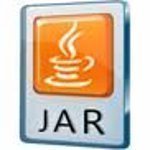WAN connects different LANs with each other to communicate and to share data and resources. As a result, routers must be used on each network or at backbone to route the IP packets and IP routing should be enabled on the routers. Routers must learn the destinations that are not directly connected by building and maintaining routing tables. Once the routing table is built, the router switches packets by matching an incoming packet’s destination address with the “longest match” in the routing table. The routing table can be constructed with Read More
Configuring the Software Metering SMS Feature
Configuring Software Metering The components involved in the software metering process: Site server: This is the place where you configure the components that support software metering, and specify which applications are included or excluded from the software metering process. The site server is also where you specify how many licenses are available, and the balancing of license information. Software metering server: The software metering server performs the following functions: Obtains configuration information from the site server. Obtains license information from the site server. Maintains and stores software usage information received Read More
Attic Antennas

An attic antenna is one that is mounted inside of an attic in order to provide maximum range as well as protection from rain, snow, sun, wind, and animals. Attic antennas are rather common and provide quality reception for those who live in rural areas, away from most radio transmitters. While attic antennas do not have as good a reception as outdoor antennas, they are covered and do not detract from the home’s appearance. How Attic Antennas Work Except that they are mounted indoors, attic antennas use the same principles Read More
How to Delegate Administrator Privileges in Active Directory
The primary reason to create organizational units is to distribute administrative tasks across the organization by delegating administrative control to other administrators. Delegation is especially important when a decentralized administrative model is developed. Delegation of administration is the process of decentralizing the responsibility for managing organizational units from a central administrator to other administrators. The ability to establish access to individual organizational units is an important security feature in Active Directory. Users can control access to the lowest level of an organization without having to create many active directory domains. Read More
TCP Sequence Prediction Attack
A TCP sequence prediction attack is an attempt to hijack an existing TCP session by injecting packets which pretend to come from one computer involved in the TCP session. The TCP Sequence Prediction Attack TCP is a reliable connection-oriented layer 4 (Transport Layer) protocol. Packet transfer between hosts is accomplished by the layers below layer 4 and TCP takes responsibility to making certain the packets are delivered to higher layers in the protocol stack in the correct order. To accomplish this reordering task, TCP uses the sequence number field. To Read More
How Do I Find Out Who Owns an Email Address?

Finding someone’s email address can be quite difficult, but finding out who owns a specific email address is rather easy. While email and the Internet has provided millions of people a way to stay connected to each other, it also means that each person on the Internet leaves a footprint behind that shows who they are, what they have been doing, and what they are interested in. This article will go over a number of ways in which anyone can be tracked down by using their email address. Forums An Read More
Nanotechnology
The word nanotechnology is a combination of the two terms "nano" and "technology." From this alone, it is apparent that nanotechnology is an application of scientific concepts at the level of molecules and particles, the sizes of which fall within the range of 1 to 100 nanometers. In a nutshell, nanotechnology refers to functional engineering at the level of molecules. Specifically, it is the deliberate application of production processes and technology at the molecular level in the order to achieve a desired result, to manufacture materials and consumables with unique Read More
Rhino Tutorials
Rhino Tutorials Welcome to ByteGuide’s Rhino Tutorials section. Here you will find guides on how boolean expressions in Rhino, new Plug-in commands, how to setup Rhino, Modeling Vegetation – Rhinoceros 3D 1.0, aircraft modeling in Rhino 3D, secrets of Rhinoceros, hidden Secrets, tutorial on backgrounds, SolidsModelling.com, how to edit Polysurfaces, how to importing PDFs and Bitmaps. Info: Defining New Plug-in Commands This tutorial offers information on deriving new command classes in Rhino. It also includes step-by-step instructions on how to use the Rhino Command Generator. Rhino SetUp This tutorial provides Read More
Jar File

JAR is an abbreviation for Java Archive. It is basically a file in archive format used to group and integrate Java classes, resources, metadata together which can then be easily distributed across Java platform. However the underlying file format is ZIP with a .jar extension. Every JAR file contains a manifest file which is normally the first in the JAR header. The Java Development Kit (JDK) bundles an built-in tool to create and extract JAR files. Like any archive format, JAR also helps compress data that’s packed into it. The Read More
Long Range Acoustic Device
The LRAD or the long range acoustic device that has been developed by American Technology Corporation is capable of emitting a maximum of 151Db sound within 30 degrees of where the device is pointing. This device can be used as a combatant deterrent weapon or crowd-control device by emitting sounds that are painful to the ears. The LRAD weighs about 210 kilograms and is capable of emitting sound within a 15 to 30 degree beam. The range of the LRAD is 300 to 500 meters and, at maximum volume, it Read More


Share on: